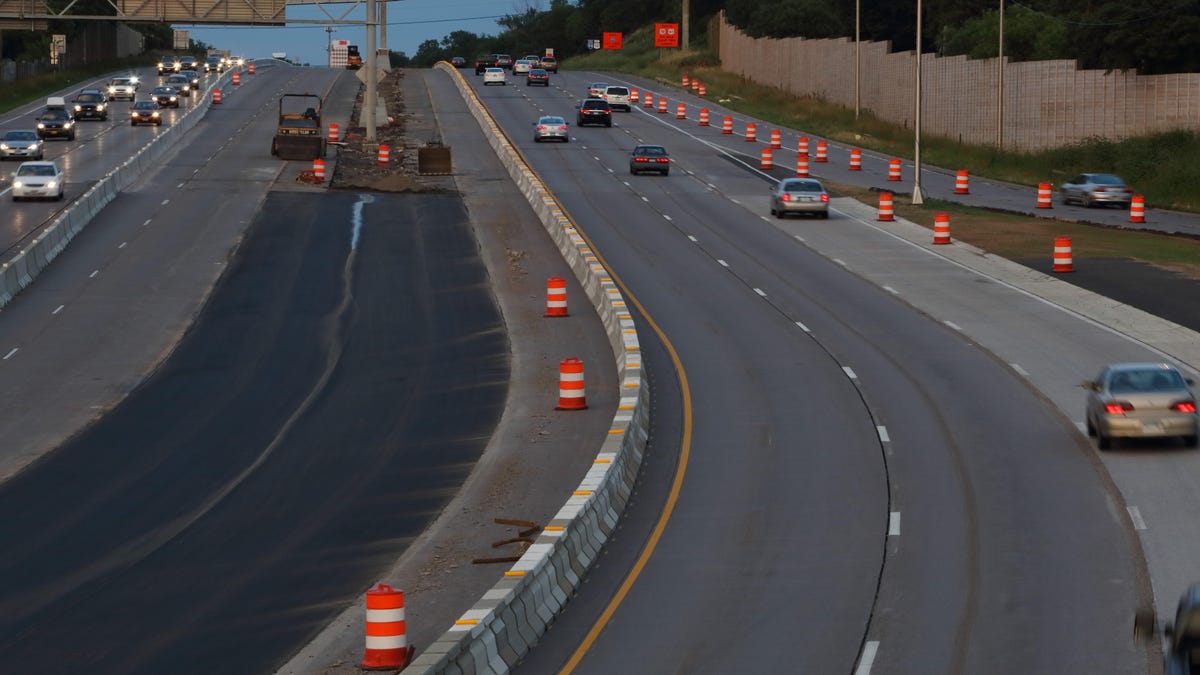3M Connected Roads aim to make life easier for autonomous vehicles
Special lane markings and road signs with hidden functionality can make autonomous cars safer and more reliable on the road.

The road is a strange, and oftentimes confusing place as thousands of novels, films and songs have told us. Imagine being an autonomous car trying to parse road markings in different states of decay, the myriad street sign designs and throw in other vehicles on top of it and things quickly become more than a little daunting.
What if instead of forcing autonomous cars to adapt to our crumbling, patchwork infrastructure, we could update that infrastructure with relatively low-cost solutions to make it much simpler for self-driving cars to see? 3M wants to just that with its Connected Roads project.
3M's Connected Roads program uses tweaked versions of existing road marking technologies to help autonomous cars better navigate existing roads.
The idea of "smart roads" isn't especially new, and in the last couple of years, in particular, we've seen a stack of concepts for turning our highways, byways and city streets into something more than flat, stupid concrete. The problem with the bulk of these is that any municipality that chose to implement them would have to spend vast sums of money retrofitting roads with sensors and other gizmos.
3M's idea takes technology and materials that aren't especially different from those already in place, which makes them more cost-effective, and uses them to speak to autonomous cars. One of the ways that's being proposed is by retooling lane markings to be machine-readable by not only changing patterns but also adding the ability to reflect outside the visible spectrum which would make lidar's job easier in inclement weather. 3M scientists are also developing these lane-marking materials to be more durable than what is currently available, leading to reduced costs in the future.
Another change would involve changing road signs to be more reflective, and more easily readable. This would benefit both human drivers and self-driving cars by allowing each to more quickly and easily identify and process information. Specifically-designed 3M smart codes would refer the vehicle back to a central database for regularly updated information on the road. These smart codes are currently being tested and developed by 3M alongside several government agencies.
3M's Connected Roads program uses existing technologies like its retroreflective road markings to help empower machine vision as well as human vision at night or in inclement weather.
One of the most significant concerns with autonomous cars is the security of their platforms. The idea of having your vehicle hacked is justifiably frightening and given the slow-to-change nature of infrastructure, putting something in place that isn't hackable makes sense. This is why low-tech solutions like those that 3M proposes to make are so compelling. By eliminating one angle that a hacker could use to attach the system, the system as a whole becomes more defensible, unless someone goes and steals the road sign itself, in which case the vehicle needs to be able to adapt.
We realize that on the surface (road pun!) this all sounds less sexy than a solar roadway or pavement with embedded LEDs or fiber-optics or self-heating or cooling functionality or Jetsons cars, but because those ideas all have significant costs attached, they are unlikely to happen on a major scale. Let's face it, there is a reason why our roads suck, and our bridges are terrifying, and it's not because state and local departments of transportation are flush with cash. Keeping costs to a minimum means that these changes would realistically happen as part of routine maintenance rather than a massive project.
One of the most interesting aspects of the Connected Roads program is its use of SmartCodes that are only visible in the infrared spectrum. This allows self-driving cars to see the codes without human drivers being distracted by them. These codes link back to a central database with information about road conditions, etc.
3M was able to convince the Michigan Department of Transportation in May of 2017 that this might be the case and as such, Michigan agreed to adopt a pilot program to help test the efficacy of these new road markings and signs along I-75 in Oakland County. Michigan represents a perfect test case because its severe winter weather has traditionally been a real challenge for those designing self-driving cars.
The ideas that 3M is putting forth here seem novel, but they harken back to the mid-nineties when a team working under the name Intelligent Transportation Systems Project wanted to develop a way for snowplows to better see the edges of the roads they were plowing. To do this, the team added magnetic particles to road paint that could be picked up by sensors attached to the plows. The system was pretty effective but wasn't widely adopted by municipalities, and so it was shelved after a couple of years. The team soldiered on, though, making sensors until 2008 when it was closed down. The team was renamed and reactivated in 2017 as the Connected Roads Group.

